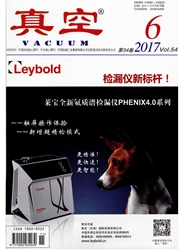

 中文摘要:
中文摘要:
基于密度泛函理论采用第一性原理对Ti8O16、Ti8O15和Ti8O14三种晶体结构进行电子结构的模拟计算。通过模拟结果的分析推断氧空位的作用:氧空位含量较少时,起捕获电子的作用;氧空位含量较多时,起构成导电细丝的作用;可得出Ti O2阻变机理受导电细丝理论和空间电流限制电荷效应控制的推论。参考模拟计算的结果,通过选择不同的反应磁控溅射镀膜工艺,控制薄膜钛氧比进而改变氧空位含量,可获得低阻态受氧空位导电细丝控制的阻变介质层。采用反应磁控溅射法制备以Ti O2薄膜为阻变层的阻变元件并研究其阻变机理,需要大量的实验以优化镀膜工艺参数,而采用计算模拟的方法探讨阻变机理则可以节约材料和时间成本。
 英文摘要:
英文摘要:
Electronic structures of T8sO16, Ti8O15 and Ti8O14 were calculated by first-principle calculation based on Density Functional Theory (DFT). Through the analysis of simulation, the oxygen vacancy function was inferred as capturing electrons at less content and forming conduction filament when the content increasing. It is concluded that the resistive switching mechanism of TiO2 was effected by conductive filaments and Space Charge Limited Current(SCLC )effect. Based on the computational simulation, thin film titanium oxide ratio was controlled by different reactive magnetron sputtering process. Therefore, the content of oxygen vacancy was changed, and the dielectric layer in low resistance state can be obtained. In order to optimize coating process parame- ters, it needs quantities of experiments preparing TiO2 film by reactive magnetron sputtering, while materials and time will be saved by computational simulation method.
 同期刊论文项目
同期刊论文项目
 同项目期刊论文
同项目期刊论文
 Structural, half-metallic and elastic properties of the half-Heusler compounds NiMnM (M = Sb, As and
Structural, half-metallic and elastic properties of the half-Heusler compounds NiMnM (M = Sb, As and 期刊信息
期刊信息
